In this series, I aim to demystify modern spirituality, demonstrating that ancient understandings of the human condition are not exclusive to the ‘enlightened.’ Instead, they provide an intelligent and effective way of living for everyone when understood and integrated properly.
Let’s be honest—energy healing sounds like something pulled from a fantasy novel. A little too mystical. A little too vague. For many, it sits in the same mental box as crystal auras and cosmic downloads: intriguing, but unprovable… maybe even a con.
And the truth is, skepticism has its place. It’s not wrong to question things that sound like they belong in a fairytale. But here’s where the conversation shifts: energy healing isn’t about magic. It’s about the nervous system. It’s about attention, regulation, and presence. It’s about how the body responds to touch, intention, and the emotional environment around it.
At its core, energy healing is a form of somatic attention. Practitioners aren’t manipulating invisible forces—they’re working with the body’s capacity to settle, to shift out of survival mode, to feel safe enough to release tension. That might look subtle from the outside. But internally, it can feel like pressure dissolving, emotions surfacing, clarity returning.
No one’s claiming it replaces medical care or solves everything. But the body is electrical. The heart has a measurable electromagnetic field. Our cells communicate through frequency. Energy is not a metaphor—it’s physiology. And healing isn’t always dramatic. Sometimes, it’s just a softening. A breath returning. A sense of self coming back online.

Because if we don’t question it, we can’t clarify it. We risk either blindly believing—or blindly dismissing—something that might have real value when properly understood. Behind the incense and Instagram hashtags, there is something worth examining. Something measurable. In this blog, we strip away the fluff and take a clear-eyed look at what energy healing really is. The science, the mechanisms, the impact. No blind faith—just grounded insight into a practice that’s often misunderstood.
🔬 Not Spiritual — Scientific: The Energy Behind Energy Healing
What “energy” actually means in modern terms:
Forget the aura talk. When we say “energy” in this context, we’re often referring to:
- Bioelectrical activity — Your body runs on electrical signals. Brain waves, heart rhythms, nerve impulses—measurable and essential.
- Electromagnetic fields (EMFs) — Every organ, especially the heart and brain, emits a measurable field. This isn’t spiritual—this is physics.
- Nervous system regulation — Practices like Reiki or somatic work stimulate the parasympathetic nervous system (rest/digest), which reduces stress and inflammation.
- Placebo and expectation effects — Well-researched. Belief alone can trigger real physiological responses through brain-body communication.
⚙️ What modern tech is showing us:
1. EEG (Electroencephalography)
Measures electrical activity in the brain. Used to track brainwave changes during energy healing, meditation, hypnosis.
2. HRV (Heart Rate Variability)
Shows how balanced your nervous system is. Energy healing often increases HRV—a sign of reduced stress and improved resilience.
3. fMRI (Functional MRI)
Tracks changes in brain regions. Studies on energy therapies (like Reiki) show shifts in areas tied to pain, emotional regulation, and attention.
4. GDV (Gas Discharge Visualization)
Used in fringe and exploratory studies to visualize the body’s electromagnetic field. Not mainstream, but being investigated.
5. Infrared thermography & skin conductance
Measure physiological relaxation. Both show measurable shifts during healing sessions—even without touch.
🧠 So what’s actually happening?
The most likely explanation:
Energy healing influences the nervous system, shifts brain wave states, increases parasympathetic dominance, and reduces inflammation—all of which can be tracked with modern tools.
The Earliest Known Version of Energy Healing
Long before it was called “energy healing,” ancient cultures were already working with the body in ways that mirror today’s practices. The earliest known forms can be traced to Traditional Chinese Medicine and Ayurveda, both dating back over 2,500 years.
- In China, the concept of Qi (pronounced “chee”) described a life force energy flowing through meridians. Practices like acupuncture, qigong, and acupressure were designed to balance this energy and restore health.
- In India, prana was the central concept in Ayurvedic medicine and yogic practices. Breathwork (pranayama) and touch-based therapies aimed to move energy through the chakras and nadis—energetic channels said to affect physical and mental health.
These systems weren’t vague—they were structured, systematic, and diagnostic in nature. While the language was symbolic, the goal was real: shift the internal state to support healing.
Modern energy healing borrows heavily from these roots—just with updated branding and less cultural context. And what was once considered ancient wisdom? Much of it now aligns with what neuroscience and somatic therapy are validating today.
Practical Applications: How to Incorporate Energy Healing into Daily Life
You don’t need incense, chanting, or a healer on speed dial to tap into the benefits of energy healing. At its core, this is about learning how to regulate your nervous system, release internal tension, and become more aware of what your body is signaling.
Here’s how to bring it into your routine—quietly, consistently, and effectively.
1. Start with Stillness (3–5 minutes a day)
Simple breath awareness or body scanning tunes you into subtle shifts in energy—your tension, fatigue, focus, or overwhelm. Think of it as charging your internal GPS.
2. Use Hands-On Techniques (Yes, Literally Your Hands)
Practices like Reiki or havening work by placing your hands on areas of the body (chest, stomach, head) to bring calm and attention. Even without training, the act of intentional touch can signal safety to your system.
3. Practice Grounding (Especially When Stressed)
Walk barefoot, lie on the floor, or do a 60-second drop-in (feet planted, attention on breath). These basic movements recalibrate your body’s “electrical” baseline—especially useful in high-pressure or chaotic environments.
4. Daily Discharge Rituals
End your day with a 2-minute shake-out, stretch, or movement sequence. These mimic somatic release techniques—used by animals and trauma-informed therapies—to process built-up energetic charge.
🎧 5. Integrate Sound (Optional but Powerful)
Binaural beats, low-frequency hums, or toning can help entrain your brain to calmer states. Even five minutes while working or winding down can reset your rhythm.
Conclusion
Energy healing doesn’t have to be mystical to be meaningful. Strip away the jargon, and what you’re left with is a practice that helps the body regulate, reset, and repair—often through mechanisms science is beginning to understand.
It’s not about believing in magic. It’s about recognizing how attention, intention, and nervous system shifts affect everything from mood to immunity.
You don’t have to “buy into” anything. Just be open enough to explore it from a new angle: not spiritual—scientific, practical, and deeply human.



